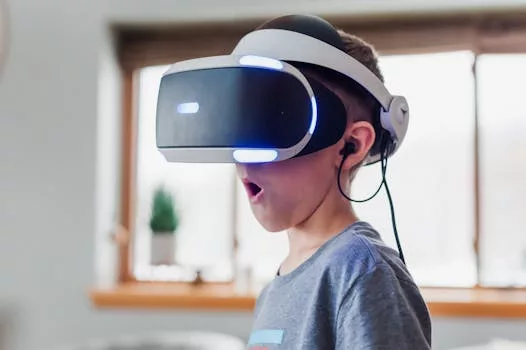
“
Wearable Tech 2025: Innovations That Will Change How We Interact with the World
Wearable Tech 2025 is expected to be a game-changer in the way we interact with the world. With the rapid advancement of technology, wearable devices are becoming increasingly sophisticated, allowing us to track our health, receive notifications, and even control our surroundings with just a few taps on our wrists. In this article, we will explore the latest innovations in wearable tech and how they will impact our daily lives.
Section 1: Introduction to Wearable Tech
Wearable technology has come a long way since the introduction of the first smartwatch. Today, we have a wide range of wearable devices, from fitness trackers to smart glasses, that can track our every move, monitor our health, and provide us with valuable insights into our daily lives. With the increasing demand for wearable devices, manufacturers are constantly innovating and improving their products to meet the needs of consumers. For more insights on this topic, check out Wearable Tech in 2025: Bridging the Gap Between Health and Technology.
Section 2: Latest Innovations in Wearable Tech
So, what can we expect from wearable tech in 2025? Here are some of the latest innovations that will change the way we interact with the world:
- Augmented Reality (AR) Glasses: AR glasses are expected to become more mainstream in 2025, allowing us to interact with virtual objects and information in our daily lives.
- Smart Contact Lenses: Smart contact lenses are being developed to monitor our health, provide virtual displays, and even grant us superhuman vision.
- Biometric Sensors: Biometric sensors are becoming more advanced, allowing us to track our vital signs, monitor our emotional state, and even detect diseases before they become symptomatic.
- Brain-Computer Interfaces (BCIs): BCIs are being developed to allow us to control devices with our minds, revolutionizing the way we interact with technology. For a deeper dive into this, read The Future is Now: Key Wearable Tech Innovations to Look Out for in 2025.
Section 3: Impact of Wearable Tech on Our Daily Lives
So, how will wearable tech impact our daily lives in 2025? Here are some potential scenarios:
- Improved Health and Wellness: Wearable devices will become more sophisticated, allowing us to track our health and wellness with greater accuracy, and receive personalized recommendations to improve our lives.
- Increased Productivity: Wearable devices will allow us to stay connected and receive notifications, making it easier to manage our time and prioritize our tasks.
- Enhanced Entertainment: Wearable devices will revolutionize the way we experience entertainment, with AR glasses and smart contact lenses allowing us to immerse ourselves in virtual worlds like never before.
- New Forms of Interaction: Wearable devices will enable new forms of interaction, such as controlling devices with our minds, and communicating with others through virtual reality.
Section 4: Challenges and Limitations of Wearable Tech
While wearable tech holds a lot of promise, there are also challenges and limitations that need to be addressed:
- Privacy Concerns: Wearable devices raise significant privacy concerns, as they can collect sensitive data about our health, location, and activities.
- Security Risks: Wearable devices are vulnerable to hacking and cyber attacks, which can compromise our personal data and put us at risk.
- Social Isolation: Wearable devices can exacerbate social isolation, as we become more reliant on technology and less engaged with the world around us.
- Accessibility and Affordability: Wearable devices can be expensive and inaccessible to many people, particularly in developing countries. For a broader view on this, see The Rise of Smart Accessories: How Wearable Tech Will Transform Fashion by 2025.
Section 5: Conclusion
In conclusion, wearable tech is poised to revolutionize the way we interact with the world in 2025. With the latest innovations in AR glasses, smart contact lenses, biometric sensors, and brain-computer interfaces, we can expect significant improvements in our health, productivity, and entertainment. However, we also need to address the challenges and limitations of wearable tech, including privacy concerns, security risks, social isolation, and accessibility and affordability issues. As we move forward, it is essential to prioritize responsible innovation and ensure that wearable tech benefits all members of society. For more on the future of wearable tech, check out From Smart Fabrics to Health Monitors: The Wearable Tech Revolution of 2025.





